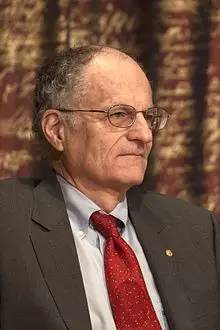
本文选编自张慧铭老师的教学博客
国内经济学研究生普遍的数学基础是考研的3门课:微积分、线性代数和概率统计,那国外的呢?
2006年5月23日,曼昆回答了一个学生的邮件问题“Advice for Aspiring Economists”。第2天,曼昆回信“ Which math courses? ”给出了他认为的经济学学生必备的数学知识。而2011诺奖得主萨金特给出的经济学研究生建议学的更多数学科目。
估计这就是得了诺奖与没得诺奖的区别之一……

曼昆在自己的博客http://gregmankiw.blogspot.com/2006/05/which-math-courses.html里回答了一个学生下面的邮件问题
Tuesday, May 23, 2006
Advice for Aspiring Economists
A student from abroad emails the following question:
Do you have some hints for me, how to become a good economist?
Here is some advice for, say, an undergraduate considering a career as an economist.
1. Take as many math and statistics courses as you can stomach.
2. Choose your economics courses from professors who are passionate about the field and care about teaching. Ignore the particular topics covered when choosing courses. All parts of economics can be made interesting, or deadly dull, depending on the instructor.
3. Use your summers to experience economics from different perspectives. Spend one working as a research assistant for a professor, one working in a policy job in government, and one working in the private sector.
4. Read economics for fun in your spare time. To get you started, here is a list of recommended readings.
5. Follow economics news. The best weekly is The Economist. The best daily is the Wall Street Journal.
6. If you are at a research university, attend the economic research seminars at your school about once a week. You may not understand the discussions at first, because they may seem too technical, but you will pick up more than you know, and eventually you’ll be giving the seminar yourself.
You may find some other useful tidbits in this paper of mine.
曼昆第2天回信,认为本科生经济学学生应该学习的数学有
Wednesday, May 24, 2006
Which math courses?
In response to my previous post offering advice to aspiring economists, a student emails me:
Since the time allocation is limited, I can take only some math courses and the problem is that I am not sure which courses are most important for a successful economist and which course I should take first. Can you possibly suggest for me a list of math courses that a typical economics student should take step by step?
Here is one plan of action:
Calculus
Linear Algebra
Multivariable Calculus
Real Analysis
Probability Theory
Mathematical Statistics
Game Theory
Differential Equations
There is, of course, some flexibility about the order of courses. Check the prerequisites at your school to figure out the right sequencing.

而诺奖得主萨金特给出的经济学研究生建议学的更多数学科目,网站如下
https://files.nyu.edu/ts43/public/math_courses.html
Math courses for NYU students
Essential Courses for Economics Undergraduate Students - Courant
Derivatives, antiderivatives, and integrals of functions of one real variable. Trigonometric, inverse trigonometric, logarithmic and exponential functions. Applications, including graphing, maximizing and minimizing functions. Areas and volumes.
Techniques of integration. Further applications. Plane analytic geometry. Polar coordinates and parametric equations. Infinite series, including power series.
Functions of several variables. Vectors in the plane and space. Partial derivatives with applications, especially Lagrange multipliers. Double and triple integrals. Spherical and cylindrical coordinates. Surface and line integrals. Divergence, gradient, and curl. Theorem of Gauss and Stokes.
Systems of linear equations, Gaussian elimination, matrices, determinants, Cramer's rule. Vectors, vector spaces, basis and dimension, linear transformations. Eigenvalues, eigenvectors, and quadratic forms.
Advanced Courses for Undergraduate Students - Courant
http://www.math.nyu.edu/courses/ug_course_descriptions.html
If you want to go to graduate school, it is essential that you take a course in real analysis. After that, courses in probability theory, Markov chains, and differential equations, probably in that order will be very useful.
Linear spaces, subspaces, and quotient spaces; linear dependence and independence; basis and dimensions. Linear transformation and matrices; dual spaces and transposition. Solving linear equations. Determinants. Quadratic forms and their relation to local extrema of multivariable functions.
An introduction to the mathematical treatment of random phenomena occurring in the natural, physical, and social sciences. Axioms of mathematical probability, combinatorial analysis, binomial distribution, Poisson and normal approximation, random variables and probability distributions, generating functions, Markov chains applications.
An introduction to the mathematical foundations and techniques of modern statistical analysis for the interpretation of data in the quantitative sciences. Mathematical theory of sampling; normal populations and distributions; chi-square, t, and F distributions; hypothesis testing; estimation; confidence intervals; sequential analysis; correlation, regression; analysis of variance. Applications to the sciences.
Introduction to the mathematics of finance. Topics include: Linear programming with application pricing and quadratic. Interest rates and present value. Basic probability: random walks, central limit theorem, Brownian motion, lognormal model of stock prices. Black-Scholes theory of options. Dynamic programming with application to portfolio optimization.
In numerical analysis one explores how mathematical problems can be analyzed and solved with a computer. As such, numerical analysis has very broad applications in mathematics, physics, engineering, finance, and the life sciences. This course gives an introduction to this subject for mathematics majors. Theory and practical examples using Matlab will be combined to study a range of topics ranging from simple root-finding procedures to differential equations and the finite element method.
First and second order equations. Series solutions. Laplace transforms. Introduction to partial differential equations and Fourier series.
Many laws of physics are formulated as partial differential equations. This course discusses the simplest examples, such as waves, diffusion, gravity, and static electricity. Non-linear conservation laws and the theory of shock waves are discussed. Further applications to physics, chemistry, biology, and population dynamics.
Complex numbers and complex functions. Differentiation and the Cauchy-Riemann equations. Cauchy's theorem and the Cauchy integral formula. Singularities, residues, and Laurent series. Fractional Linear transformations and conformal mapping. Analytic continuation. Applications to fluid flow etc.
The real number system. Convergence of sequences and series. Rigorous study of functions of one real variable: continuity, connectedness, compactness, metric spaces, power series, uniform convergence and continuity.
Functions of several variables. Limits and continuity. Partial derivatives. The implicit function theorem. Transformation of multiple integrals. The Riemann integral and its extensions.















